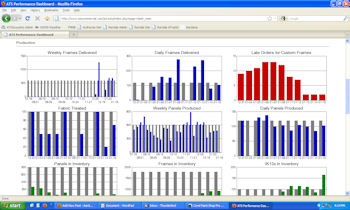January 19th, 2010 — 9:09pm
One of life’s important balances is between short-term survival and long-term momentum. It applies in almost every context. You need short-term results to survive. You need long-term results to build momentum.
Some examples:
- A company needs to make sales for short-term survival, and can build momentum through development of new products.
- A household needs to make enough income to cover bills for short-term survival, and can build momentum through saving for retirement.
- A marriage needs basic civility for short-term survival, and can build momentum by having those deeper, tougher conversations.
- A college student needs to eat and sleep for short-term survival, and can build momentum by studying to learn new skills
- An entry-level employee needs to go to work today for short-term survival, and can build momentum by preparing for and applying for a management position.
- A factory needs to repair broken-down equipment for short-term survival, and can build momentum by replacing worn out equipment with newer models.
Here’s the trouble. Survival is always urgent. Long-term momentum is never urgent. What’s worse, doing something for the long term usually makes the short-term more difficult. Studying is harder than partying. Saving is harder than spending. Research and development is harder than making another batch of the same product. Long-term gain often involves short-term pain. Human nature is short-sighted, and pain-averse. Making room for the long-term is not natural.
In fact, many of us do this backwards, often choosing long-term pain for short-term gain. We borrow from the future for a more comfortable today. Misuse of consumer debt and poor choices about eating and exercise are common examples. A company slapping it’s trusted brand on inferior products for short-term profits is another case of the same thing. The long term results of this backwardness are devastating. With money it leads to bankruptcy. With health it leads to disability. Not good stuff.
Wisdom means looking past today, past tomorrow, all the way to the end of the story. Zoom out. How does what you do today affect next year, next decade, your life’s legacy, and eternity? Making choices for the best long-term result is hard. It takes maturity and the ability to tolerate discomfort. But the rewards in life and business are huge.
All you have to use today is the short-term. We all gotta eat, so go ahead and do some short-term stuff today to take care of that. But, if you can, organize things so you have some time and resources left for building momentum. What part of today’s short term will you invest in your long term?
January 17th, 2010 — 9:32pm
I recently created a web-based dashboard for myself and my employees which we call the “Performance Screen”. It currently shows 23 measurements on simple bar charts including production volumes, employee attendance, customer satisfaction results, even how many pieces of scrap and trash are left on the production floor at the end of a day. Anyone in the company can view it from any computer. Here’s a partial screenshot:

Working from this screen, we’ve seen performance improvement in areas that have bugged me for a long time. Here are some lessons from my recent experience with this:
- Use specific, objective measurements. It’s hard to argue with numbers in black and white.
- Use technology to minimize cost of information. If it takes a lot of manual work for managers to pull together relevant performance data, it’s not going to happen often enough.
- Put a reminder system in place so measurements are taken and recorded even when management attention is focused elsewhere. In our case, to ensure consistency, our computer system requires employees to complete scheduled monitoring tasks before it allows them to clock out.
- Make short feedback loops. When changes in behavior are reflected on a chart the same day, reinforcement occurs much more effectively than when feedback comes at the end of the quarter.
- Keep records over time. The system has a better memory than I do, and that helps. As a manager, it’s hard for me to see trends and confidently and fairly grasp the overall picture without a clear record of performance over time.
- Encourage accountability through transparency. Because everyone in the company can see performance charts with a single click, attention is drawn to problem areas. And the system holds me accountable too. Confronting unacceptable performance is uncomfortable for me, but there’s no easy way out now, because flying under the radar is no longer an option for me, or for them.
- Use the data to make confident decisions. With clear, objective performance data I can act decisively with less hesitance about misjudging or being unfair. These confident actions as a manager are where the value happens.
The concept of short feedback loops was the thought that motivated me to go ahead and spend the time to develop this system. It came from Seth Godin’s book “Survival Is Not Enough” about the parallels between biological evolution and organizational change.
I’ll update you in the future as I learn more about the benefits and weaknesses of this type of management system.
What performance measures are key to your success? Can you put them on a dashboard?
January 14th, 2010 — 9:41am
No matter what goal you hope to achieve, there is one thing you can do that will put you light years ahead of most other people who have the same goal.
Start.
By taking action, you transform your wish into a project. For every wish that becomes an active project there must be at least 100 that remain passive wishes. So put yourself in the top 1%.
Starting won’t be enough to get you to the finish line, but it sure will improve your odds.

